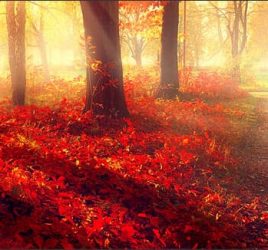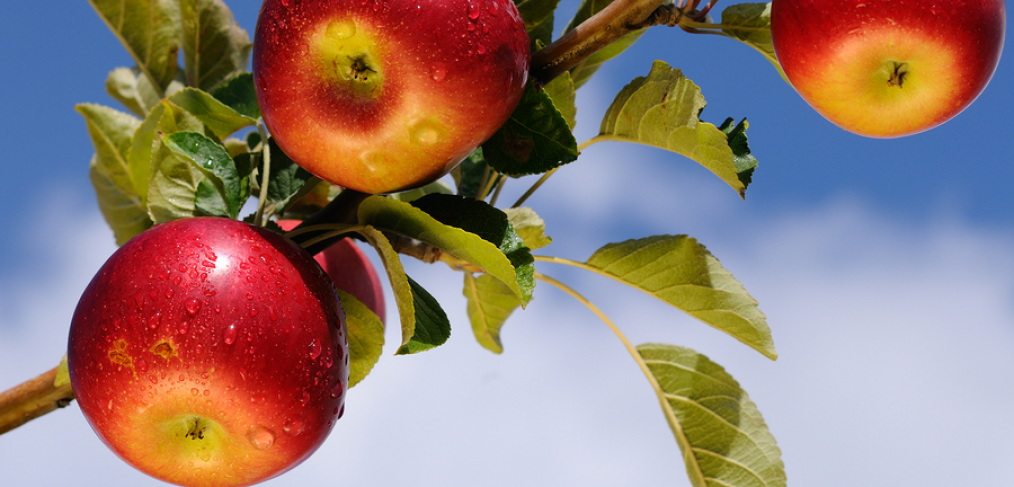
How To Start Your Own Orchard – Gardening Tips
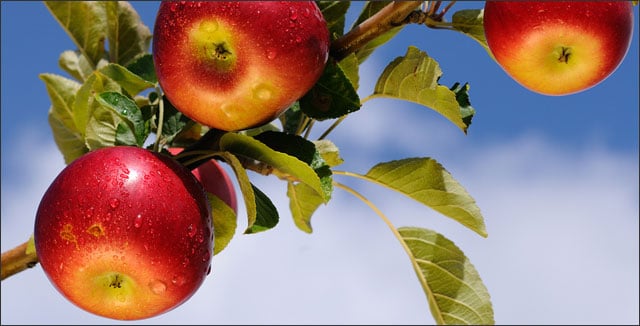
One of my favorite memories from childhood is of picking apples at my grandparents’ house. Neither of them would have considered themselves farmers. However, since they both grew up on a farm – in the midst of the depression – growing their own food was second nature.
Twenty or so years before I was born, they planted several kinds of apple trees in their large front yard. I can remember climbing a ladder to get to the very top branches with the sweetest apples and eating them straight from the tree.
Now that they are both gone I know those trees are still laden with fruit every year. My uncle gathers them now, no doubt, and carries on the tradition of preserving them in the form of apple butter, dried apple rings, and applesauce.
Have you ever wondered if you could handle your own orchard? Do you know you can plant dwarf varieties which will bear fruit after the first year or two, and even plant some varieties in containers?
There are definitely tips and tricks to making your fruit trees thrive. However, with a little patience, anyone can harvest apples, pears, peaches, plums, and cherries in their own orchard for many years to come.
Tips On Creating Your Own Orchard
Fruit Tree Requirements
The first thing you need to know is whether you have full sun in any part of your yard. Fruit trees need a full 8 hours of direct sun every day to grow their best. That’s why you don’t see orchard trees planted with any other trees – you obviously want the sweetest yield possible.
Make note of any tall trees or buildings that might block the sun in the later hours of the day at the end of August when daylight hours are starting to get shorter.
However, don’t sweat it if you don’t have a large field of full sun in which to plant three rows of trees. You can take advantage of the sun you do get in various parts of the yard.
For one household, one or two of each fruit tree will yield quite enough fruit for the whole season. You could plant your hardiest trees in the southern exposure areas: apples, American plums, and sour cherries.
Early blooming trees need to be planted away from a south-facing area as they are prone to frost if they bloom too early from the early sun exposure. Peaches and apricots are in this category – much more sensitive to cold.
Here’s another pro tip: try to select a sloping area in which to plant your fruit trees. These guys need well-drained soil more than they need high-quality soil. Avoid planting in a low-lying area, as these areas hold cold and moisture – making them much more likely to kill a tree in the winter.
Which Varieties To Choose for Your Orchard
This is where things get interesting. Fruit trees need cold, but not too much cold. They also need to be protected from the harshest winter weather but need full sun. In addition, unless you get a self-pollinating variety, you also need more than one tree in order to get fruit.
Selection
If you are a beginner, it makes a lot of sense to consult a local nursery that knows its business – not just a Lowe’s or Home Depot. They can recommend varieties that will withstand either the harsh winters or winters that are too mild depending on where you live.
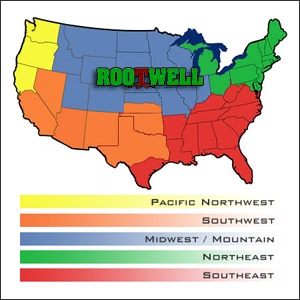
Believe it or not, fruit trees need a certain period of cold in order to fruit in the spring. Hardiness zones are a guideline.
For instance, if you have a courtyard or a sheltered area – somewhat enclosed by low walls – you could get away with planting a tree that is slightly outside of your hardiness zone.
It’s a common practice, historically, to build a stone fence around an orchard both to shelter the trees from the wind and to provide passive heat from the stones which get warmed by the sun. On the flip side, if you plan to plant your trees in a very unsheltered location, you will be ruling out all but the hardiest of trees.
Varieties
Most fruit trees need at least two different varieties planted, which bloom at about the same time and have compatible pollen in order to do their best. A nursery will be able to help you with this as well.
However, a fruit tree catalog is a good place to start looking. Generally, they list which varieties pollinate each other. Some fruit trees do self-pollinate as well.
The other consideration is size. You obviously want an orchard that will be around for a long time, so you won’t want to plant a tree that will outgrow its location. Check for power lines.
For those with smaller yards or no yards, consider fruit trees that can be grown in a container: columnar apples, figs or pomegranates. These could conceivably be grown indoors and moved around to find sun as needed. Semi-dwarf trees are more productive and grow up to 15 feet.
Standard size trees grow more than 20 feet in some cases and are the most productive. They also need the most room – 20 feet between each tree. Semi-dwarf trees need only about 10 feet between each tree.
When and How To Plant
Spring planting is best for northern climates like ours in Michigan. If you live in a warm winter area – USDA zone 7 or warmer – you will have the best result if you plant in the fall.
You will need to dig your hole and make your soil compatible before your tree arrives. It will need to go into the ground as soon as you can get it there. This will give you a chance to check the quality of your soil.
It will be a big hole – probably around five feet deep and five feet wide. If you are stuck with thick, clay-like soil you will need to amend it. Digging one hole this big is no joke. Digging five holes this big you may need a strategy. Three times the size of the root ball is the rule of thumb for size.
The soil needs good drainage. You may consider installing a drain at the bottom if your soil is clay. Even if you amend it, the soil around the tree itself will hold too much water. You need aged, nitrogen-rich soil. Have a mud mixture ready to coat the roots as you are covering them.
Deep Tree Root Watering Systems
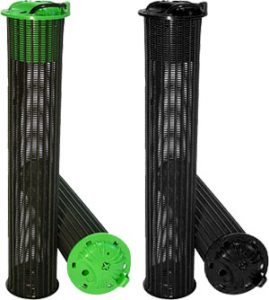
Conclusion
Planting an orchard is hard work for one season but the results are going to last you a lifetime. If you want to give this sweet gift to the generations to come, have a good plan ready, be prepared to baby your trees a bit while they are getting started, and have a little patience. You will be so happy you did.

